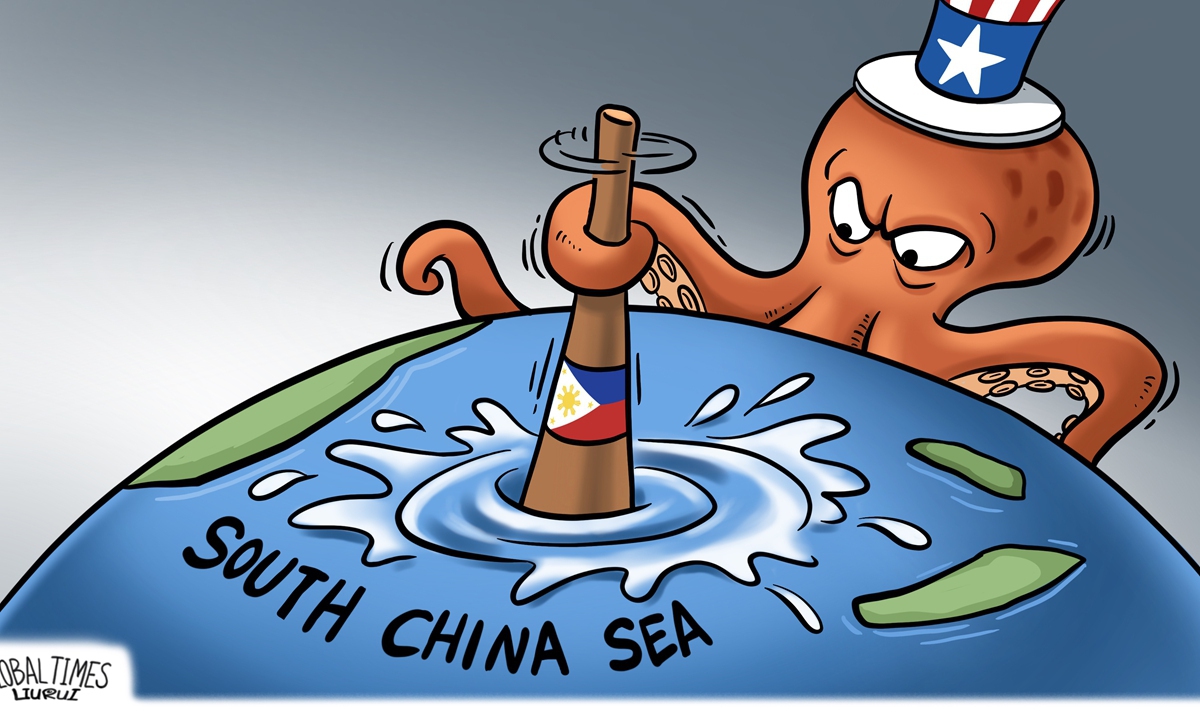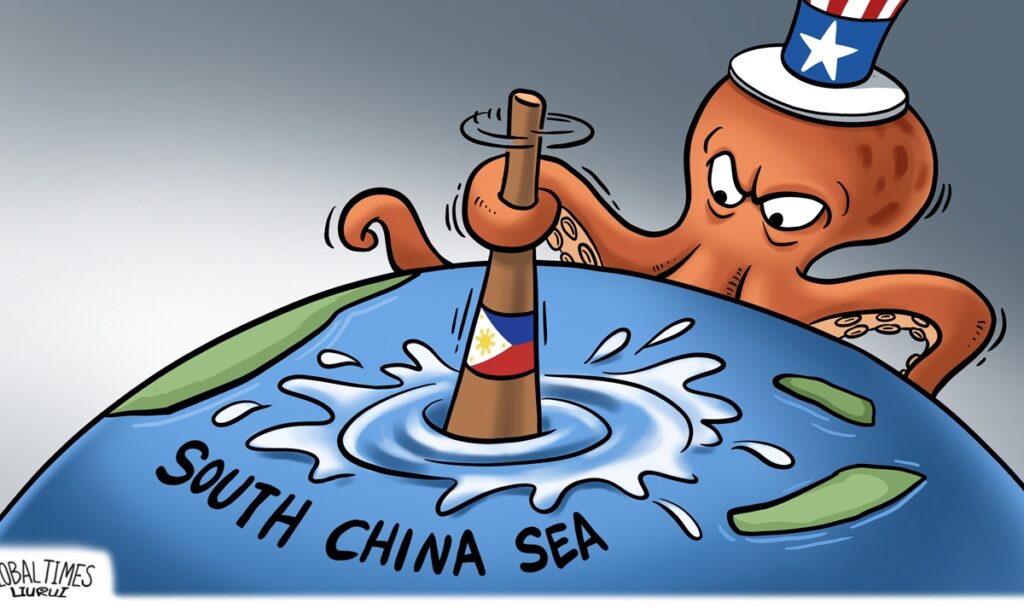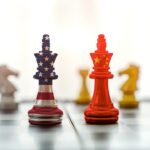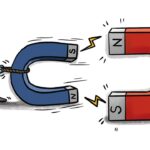
US in South China Sea Illustration:Liu Rui/GT
Recently, the Philippines has repeatedly intruded into the waters of Huangyan Island and Ren’ai Jiao in the South China Sea, frequently provoking China. Both the US Ambassador to the Philippines and the spokesperson of the US State Department have encouraged Manila’s actions, claiming to stand with the Philippines. Some Western media outlets, quoting analysts, even suggest that Washington should “escalate” the situation, as they claimed China is trying to “test the limit of how far Washington would go for its ally.” This twisted view hides the logic of the US hegemony. The fact is that the US is instigating and inciting its allies to provoke China in the South China Sea, testing China’s position.
Claims that Washington may have let the situation go too far and that China is testing how far Washington will go for its ally analyze the positions of the US and China from US perspective, which is twisted and inconsistent with facts. Although there have been disputes between China and the Philippines in the South China Sea for many years, the disputes have seldom escalated to such a serious level as today. The truth is that the Philippines is repeatedly provoking China, and the US is condoning and instigating it, leading to a precarious situation in the region.
In the South China Sea issue, the US is an extra-regional country. If a conflict breaks out in the South China Sea, it will not only affect relations between China and the Philippines but also the security of the entire region. If the US continues to intervene in the situation in the South China Sea, it will have a detrimental impact on the peace and stability of the region. The so-called US standing with the Philippines is actually the US constantly provoking China and testing China’s position to see if China will take the bait.
The suggestion by some Western media outlets and analysts that Washington needs to “escalate” the situation is very irresponsible, and reflects the deep-rooted idea of some US media and scholars trying to maintain US hegemony and suppress China. The US acts as it pleases in many parts of the world and views issues in accordance with the logic of US hegemony. The US constantly supports certain South China Sea claimants to make waves in the waters. The most crucial point is that the US only wants to use its allies rather than genuinely help them. US allies are just regarded as pawns for the US, nothing more.
The target audience of US continuous smearing of China is its “allies and partners.” The US hopes that these countries will be compelled to choose sides between China and the US, and it wants to create an impression that if they do not follow the US strategy, they will be threatened by China. The US uses public opinion and media to defame, exaggerate, or distort China’s actions. The US constantly vilifies China’s influence in the Indo-Pacific region and hypes up the “China threat theory” in order to beautify its so-called legitimacy in the Indo-Pacific hegemony.
However, it is not easy for the US to use this to build its Indo-Pacific Strategy to counter China. The means by which the US is building its Indo-Pacific Strategy are not mature because many countries do not believe the lies the US tells. Although Western media has many reports that smear and distort China, a considerable number of countries are very clear that the most important thing is to see what China has done. China has not and will not have a negative impact on the peace and stability of the South China Sea region. China’s consistent goal is to promote regional peace and stability.





